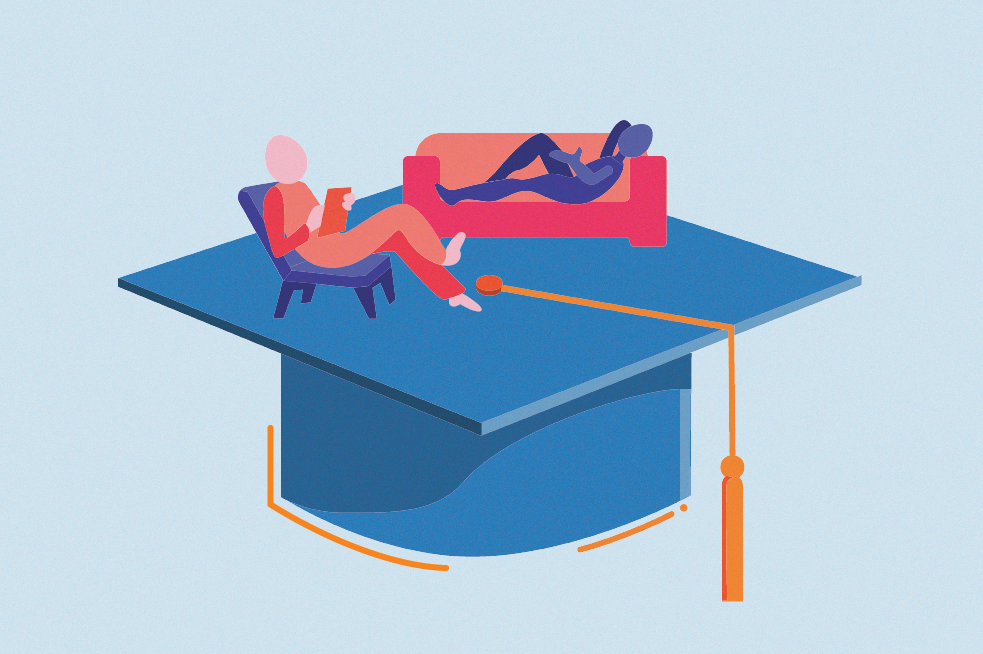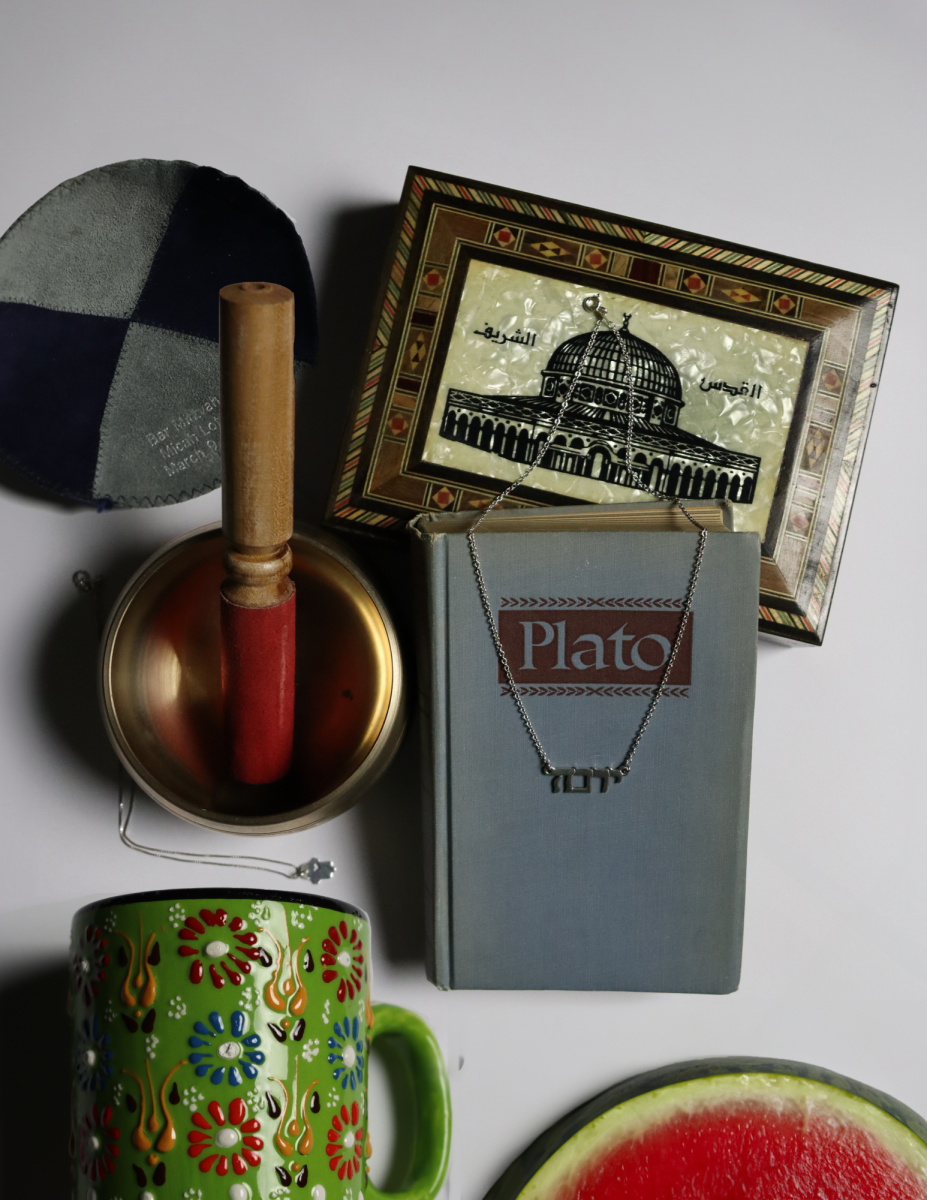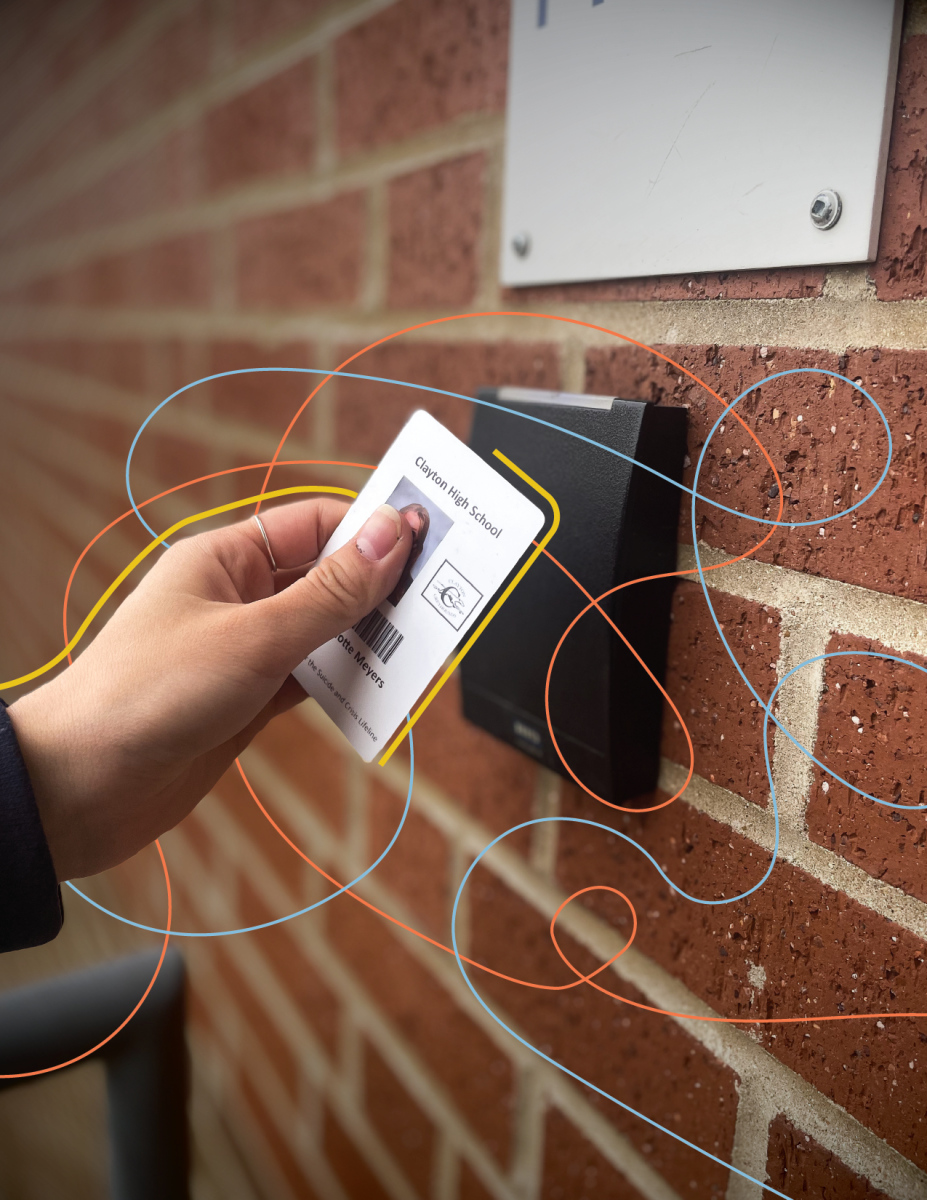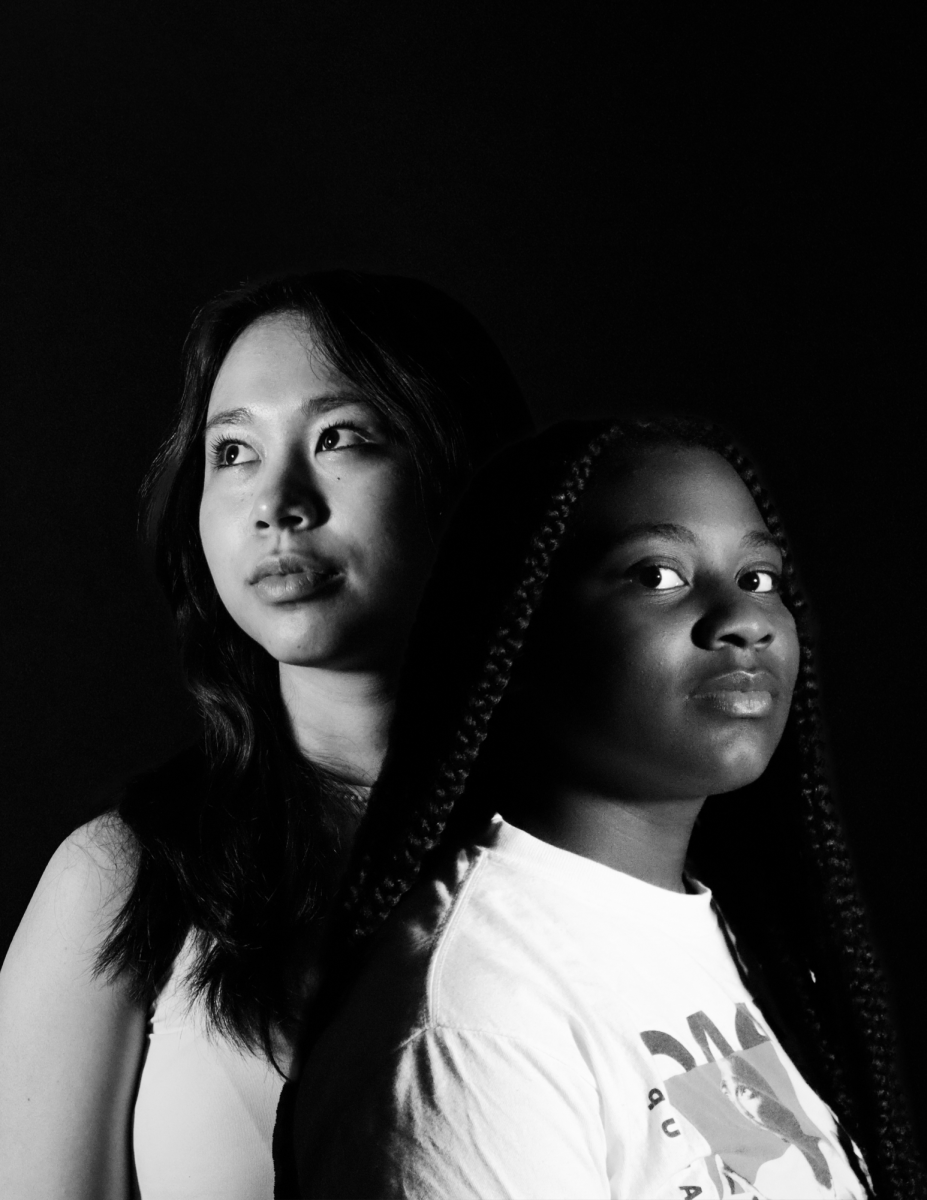Placing a crying child under anesthesia with crowds of sobbing, injured people sprawled around a makeshift hospital is not the ideal circumstance a doctor hopes for during surgery. But, desperate times call for desperate measures, and the mass of injured people suffering from the effects of the Jan. 12 earthquake in Haiti certainly qualified as a desperate time.
Dr. Chad Perlyn, an attending plastic surgeon at Miami Children’s Hospital and Assistant Professor of Surgery at the Florida International University College of Medicine, arrived in Haiti days after the earthquake and remained for a week to provide medical care.
Even an experienced doctor such as Perlyn faces an entirely new set of rules when visiting Haiti, with difficulties arising from unusual places.
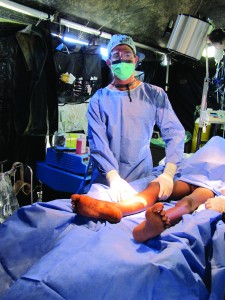
“[What is most difficult is] to overcome your own anxieties and be able to focus on the patients and their needs an put aside your own worries and your safety,†Perlyn said.
Perlyn was the team leader of the first group of pediatric surgeons to arrive in Haiti. The team of 19 doctors and nurses from Miami Children’s Hospital arrived in a plane loaded with about 15,000 pounds of cargo. Soon after their arrival, the group realized that it wouldn’t be easy t unload so many pounds of cargo. They would have to improvise.
“You land in the middle of the night at Port-au-Prince Airport and there’s no one there who says, ‘Thank you for flying American Airlines, you can pick your bags up at gate B27,’†Perlyn said. “You literally land on a runway, and there’s a few lights.â€
Eventually, using everyone’s manpower and an efficient coordination, the cargo was unloaded. But the troubles didn’t end there.
“From the minute we got there we knew it was just going to be an incredibly trying situation with very limited resources,†Perlyn said. “You very quickly figure out how to solve these types of problems and get your equipment and your people where they need to be. You have to learn to adapt.â€
With their supplies, Perlyn and his team were able to set up their own hospital within a hospital owned by the nonprofit Medi-Share inside the airport. Despite some of the good equipment being brought to Haiti, some very familiar elements of an operating room were missing for Perlyn and his team.
“But some things were just very different,†Perlyn said. “Like, our operating table. It was too big and too heavy to bring a proper operating table from one of the operating rooms, so we just got to Haiti and we found a table and it was a fold-up picnic table. But that’s what became the operating room table.â€
Ben Yoder, an anesthesia assistant at St. John’s Mercy Medical Center who has visited Haiti on numerous occasions as both a volunteer at an orphanage and as a medical volunteer, also observed a drastic difference in resources during his 2004 visit.
“It was a really good way to practice anesthesia in a way that was different than in America,†Yoder said. “I got to use some of the gases that we don’t really use anymore and some other medications that probably aren’t quite as commons. It was just really interesting to see medicine kind of practiced without all the luxuries that we have in America.â€
Additionally, Yoder appreciated the overall spirit of the Haitian people and felt welcomed for his presence and medical assistance.
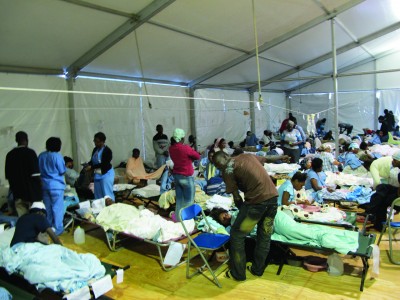
“The Haitian people are just incredibly nice and welcoming,†Yoder said. “Like, I never felt threatened in any way. I always felt very welcomed there like they were happy to have me. They were very genuine and very giving.â€
Additionally, the wounds that Perlyn attended to were severe and, even though his team avoided this scenario as often as they could responsibly, they did have to amputate many crushed limbs as a result of the horrible effects of the earthquake.
Treating infections and preventing compartment syndrome, wherein a limb swells to such a degree that the blood supply of the muscles is blocked off so that the muscle dies, became a top priority.
“Unfortunately, we did have to do a lot of amputations,†Perlyn said. “But we did try extremely hard to really save as many arms and legs as possible. And that’s something as a team that I think we’re very proud of, to save so many arms and legs so that they did not need to have an amputation. We prevented them from getting infections, from getting gangrene. And we were really able to save the arm or the  leg and that was something that was very meaningful.â€
It wasn’t just the physical impact of his patients that affected Perlyn, however. He was particularly upset by the horrible trauma experienced by particularly young victims.
“The amazing thing was that the only time I’ve seen people hurt with this amount of trauma is when a person for example was doing 150 mph on a motorcycle and hit a pickup truck,†Perlyn said. “We saw that level of trauma, that intensity of injury, in one- or two-year-olds. With conditions around the world, you don’t see those kinds of injuries because children are never in those situations; they’re never in dangerous situations to get these types of injuries. But we saw young children with absolutely devastating crush injuries to their arms, their legs, their facesâ€
The reality of a young child’s day, and possibly even life, being interrupted by a single natural disaster is a daunting concept. Perlyn recalled one story of a 9-year-old whose life has been completely altered.
“He was watching television next to his cousin and then a roof fell down on him and it killed his cousin,†Perlyn said. “For four days, he was trapped laying next to his cousin who had died.â€
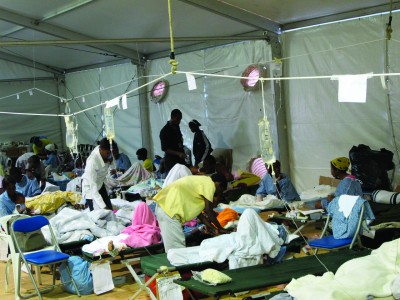
Not only did the boy face the fate of looking at his dead cousin for hours on end, but he was also inundated with heavy, dangerous objects crushing him.
“He had a wooden beam, a piece of wood, on top of him and his face was pressed against a rock. He had terrible wounds on his face and he lost part of his face and he lost an ear and part of his scalp. He got brought to us with terrible infection and maggots had already started crawling inside him, in the face and the wounds.â€
Perlyn also recalls the sometimes-brilliant use of makeshift resources to help others during his stay in Haiti.
“There was a guy whose name was Grant,†Perlyn said. “He and a couple of other guys, some were paramedics and some were firefighters, they got to Haiti and they found an old baker’s delivery truck. They couldn’t find any red paint, but they found some green paint. So they painted a green cross on the side instead of a red cross like an ambulance. They would drive this bread truck around the streets of Haiti of Port-au-Prince and when they found them [injured people], they’d put them in the back of the bread truck and drive them back to the hospital. They were really the ambulance.â€
Dr. Timothy O’Connell, a plastic surgeon at St. John’s Mercy Medical Center, has been visiting Haiti to provide medical care almost annually since 1992. He has already arranged another visit for the first week of March. While there, he will work at a hospital with only 65 beds that has currently extended into schoolrooms in the city of Cap-Haïtien.
O’Connell also finds the transition to more primitive resources to be difficult and notes that adequate transportation is lacked most noticeably.
“[Transportation] is pretty primitive,†O’Connell said. “If they need to get around, they either walk, they ride a bicycle, or they have these pick-up trucks that people ride in the back of called tap-taps. You’ll see people sitting in the back of these pick-up trucks; sometimes they’ll have a roof on them. Occasionally, you’ll see these school buses and the school buses will have public transportation not only carrying people inside of the bus, but perched on the roof of the bus. If you can imagine what it looks like, a park bench with people sitting up, in a double row of park benches, on top of the roof of the buses.â€
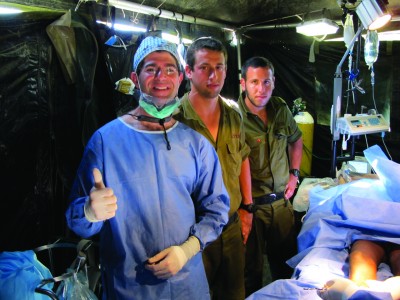
O’Connell also observed that crumbling or nonexistent infrastructure contributed to the health care transportation issues. Without typical roads, it was a challenge just to bring patients to the hospital.
“The distance between Port-au-Prince and Cap-Haïtien may be only 90 or 100 miles, but the roads are in such terrible disrepair, that in many places they’re not paved,†O’Connell said. “There are ruts and holes in the road and it takes perhaps six hours to drive maybe 100 or a little more than 100 miles.â€
“A lot of the things that we take for granted, they don’t have, such as running water, indoor plumbing, electricity,†O’Connell said. “So it’s a completely different lifestyle. The people there live, more or less, one day at a time because they’re not sure where they’re going to get their next meal tomorrow or whether they’re going to have shelter over their heads.â€
These basic amenities taken for granted in the United States are at stake in Haiti right now. O’Connell notes that the drastic contrast is particularly noticeable immediately upon his returns to the United States.
“When you walk into the Fort Lauderdale airport and you go into the restroom and you put your hands under the faucet and clear, clean water comes out, it’s always something that makes you grateful,†O’Connell said.
Despite the obstacles faced in Haiti, Perlyn was impressed by the ability of doctors from multiple countries across the world to join together for a common cause.
“The Portuguese, the Austrians, the Germans, and the Moroccans all had search and rescue teams or other surgical teams,†Perlyn said.
In fact, for two days, Perlyn worked at an Israel Army hospital that was in need of a surgeon. This period was a particularly interesting time for Perlyn because he was able to work with colleagues from across the world.
“One of the most incredible things was the incredible diversity,†Perlyn said. “I met people from all over the world and I worked with colleagues from all over the world.â€
Although Perlyn is proud of his work in the immediate period after the earthquake, he realizes that the problems in Haiti won’t be ending any time soon.
“The most dramatic, the one [issue] that the world will really see is going to be a need for prosthetic limbs for all the people that had amputations,†Perlyn said.
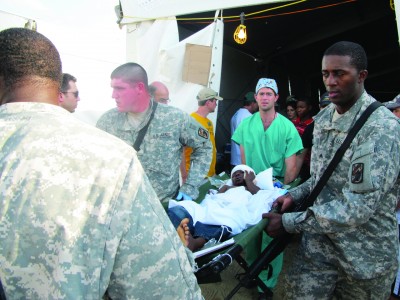
Port-au-Prince already had crumbling infrastructure that was very handicap-unfriendly prior to the earthquake, so the situation will be worsened by the sudden influx of amputees living in Haiti.
Additionally, Haiti will face severe weather threats in the upcoming months during the country’s rainy season.
“Haiti has torrential rains, really just phenomenal amounts of rain and it’ll begin in a few months,†Perlyn said. “And with the rain will come water and if people don’t have good shelter and sanitation and the sewer system doesn’t get operating again, or if it gets backed up, then there’s really a chance for having significant problems. Public health issues are going to be very real in Port-au-Prince unless something gets sorted out quickly.â€
The impending role of the United States in years to come is also unclear. According to the New York Times, Obama promised America’s “unwavering support†in helping Haitians with relief. What is unclear, however, is how lenient the U.S. government will be regarding giving ill or injured a refuge in the U.S.
“The issue immediately at hand for the American diplomats is the immigration issue,†Perlyn said. “Specifically, will we allow injured Haitians to come to America for treatment and if they’re treated here who will pay for it? And will they be able to stay?â€
Despite the many problems facing Haiti, all three health care providers have taken a love of the Haitian people from their time there.
“I’d say they’re poor in material things, but rich in spirit,†O’Connell said. “There’s a lesson for us to learn from their strong spirit…. Basically, when you go down there, you’re so touched by the fact that these people are no different than your fellow neighbor in the United States. They want the same things for their children as parents in the United States do.â€
This spirit and resilience is exactly what these people believe will allow Haiti to emerge from the ruins of the earthquake. With the aid and support of the international community, Perlyn believes that Haiti will eventually recover from this year’s tragic earthquake.
“Haiti is a beautiful country with beautiful people and an incredibly rich and diverse culture,†Perlyn said. “That culture has survived many things. It’s survived slavery, it’s survived disease, it’s survived previous earthquakes and hurricanes.†⎫


